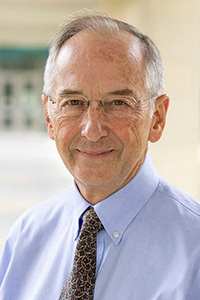Can We Pick Winners With Causal Human Biology? Vertex Makes the Case

David Shaywitz
Everybody reading this column knows that biopharma is a difficult business. Biology is unfathomably complicated and figuring out how to introduce something into the human body that does more good than harm is a fiendishly difficult challenge.
That’s why it’s important to recognize the occasional success. It reminds us what’s possible, and inspires us to think about how to achieve it more often (even as we consciously try to avoid the risk that Cass Sunstein highlights: selecting on the dependent variable and creating tidy post-hoc narratives around rare successes).
We’ll start with what still seems like an unimaginable achievement – the development of a therapy by Vertex Pharmaceuticals that effectively treats the vast majority of patients with cystic fibrosis.
We’ll then look at this achievement in the context of Vertex’s R&D strategy and consider how they are attempting to challenge (and hopefully defy) the distressingly low odds of drug development, and to demonstrate that, despite the concerns voiced by some wags, that maybe, just maybe, it is possible to “pick winners.”
Curing CF
First described by Columbia University pathologist Dorothy Hansine Andersen in 1938, cystic fibrosis is a heritable, autosomal recessive disease that affects approximately 40,000 people in the United States and 100,000 people globally. The disease is characterized by thick mucus secretions that logjam the airways in particular. Afflicted children are beset by constant coughing and lung infections. Until recently, most endured frequent hospitalizations and constant therapy, and had a median age of survival of around 30 years.
In 1989, the causative gene, CFTR, was (heroically) cloned by several research groups. That discovery prompted the next set of questions. Scientists wanted to know what the CFTR gene product actually did, and how disease mutations – including the most common CF mutation, called ΔF508 – affected the protein.
The story of the journey from CF gene to CF therapy, involving both academic researchers and industry scientists, is captured magnificently in a presentation offered by the key participants, as they accepted the 2023 Wiley Prize in Biomedical Science. The introduction and summary, by Richard Lifton, a geneticist and president of Rockefeller University, is superb.
(See also this excellent 2019 Stat piece by Matthew Herper and Adam Feuerstein.)
Michael Welsh, a physician-scientist at the University of Iowa who shared in the Wiley Prize, told the story of the first CF patient he saw when he was a third-year medical student.
We go in to see this little girl. She’s probably 7 or 8 years old. And as I watch her, she’s speaking in short sentences. She’s using her accessory muscles, respiration in her neck because she’s short of breath.
And as we talk, we find out that she has doesn’t have a normal life. She can’t go out and do the things that normal kids do. She’s spending much of her day with postural drainage, inhalation of aerosols. When she coughed, she had this foul sputum. I began to recognize the odor of Pseudomonas aeruginosa in the sputum.
The hard part was when, after seeing her, we went to talk with the faculty, and we learned she might make it to the teens and she was not going to make it out of her teen years. That made a huge impression on me. It stuck with me all my life.
Welsh would go on to focus on the epithelial cells lining the airway, and, with colleagues, show (prior to the identification of the gene for CF) that “there was a problem in the airway with chloride getting out.”

Michael Welsh, professor of internal medicine; University of Iowa
After the CF gene was cloned — a prodigious effort — Welsh demonstrated that defective chloride permeability in cultured cells from patients could be restored with the introduction of the normal (“wildtype”) CF gene, but not with a mutant CF gene. This established a link between the genotype and the disease phenotype.
Welsh also conducted sophisticated patch-clamp studies to demonstrate that the CF gene encoded an ion channel; he was then able to dissect how different components of the channel worked and to understand how mutations disrupted the function.
For example, some mutations prevented the protein from ever being made; others prevented the protein from folding correctly while still others interfered with proper channel activity. The most common mutation, ΔF508, exhibited defects in both proper folding and channel opening.
A critical observation Welsh and his colleagues made was that the ΔF508 mutation was temperature sensitive, meaning that while it didn’t function at normal body temperature of 37 degrees Celsius, it did seem to function, somewhat, at lower temperatures, suggesting that if a medicine could duplicate this effect, then function might be restored.
The next set of speakers — Paul Negulescu, Sabine Hadida, and Fredrick Van Goor — described the ensuing stages of the journey — how industry translated this new knowledge of biology into an effective drug.

Paul Negulescu, senior vice president, Vertex Pharmaceuticals
Negulescu had been working at a San Diego-based startup called Aurora Biosciences. Aurora was founded in 1995 to develop and commercialize assays using reagents like the green fluorescent protein developed by co-founder (and future Nobel Laureate) Roger Y. Tsien.
In 2000, Aurora received a commitment from the Cystic Fibrosis Foundation to fund $47 million worth of work over five years. A year later, in 2001, Vertex Pharmaceuticals acquired Aurora Biosciences.
As Stat notes, it wasn’t clear if the nascent CF program was initially even on Vertex’s radar. But the funding commitment from the nonprofit CF Foundation contributed to Vertex’s decision to stick with the program rather than cut it.
A self-described “assay guy,” Negulescu approached the challenge of CF by seeking two types of molecules: “correctors,” addressing the protein folding defect, and “potentiators” seeking to restore channel function. The assay also relied on a Tsien reagent that responded to changes in membrane potential (so they could see if channel function was restored), and the temperature sensitive ΔF508 mutations described above.

Sabine Hadida, senior vice president, Vertex Pharmaceuticals, San Diego site head
Building on the initial hits was a chemist named Sabine Hadida, who described the herculean effort required to develop what would become a remarkably effective three-drug regimen. Development of the first component, a potentiator called ivacaftor, required the synthesis and evaluation of around 800 compounds; first generation correctors such as tezacaftor required synthesis of 3,000 compounds; second generation correctors (e.g. elexacaftor) required upwards of 25,000.
Subsequent work, as Fredrick Van Goor went on to describe, revealed that these molecules were unusual in several respects; they worked at a distance from the site of the causative mutation, and each bound the CFTR protein at a distinct site. These interactions all involved parts of the channel that were embedded within the lipid membrane, explaining why the resulting drugs exhibited properties that appeared to “bend” traditional rules.

Frederik Van Goor, vice president, Vertex Pharmaceuticals
The clinical impact of the Vertex effort has been extraordinary. The triple combination of ivacaftor, tezacaftor, and elexacaftor (Trikafta) was approved by the FDA in 2019. Patients on the triple-combo treatment are projected to live 72 years (or even longer, if the drug is started when the patient is younger than 18), according to data presented by Van Goor. This compares with an estimated lifespan of 38 years with the best standard of care without these new medicines. These patients also live far healthier lives.
This is a monumental advance for the 90 percent of CF patients who are eligible. (A different approach will be required for patients unable to manufacture the chloride channel in the first place, and Vertex is pursuing gene therapy-based solutions to address this critical need.)
From Drugs To Strategy
As Stat notes, by 2008, Vertex’s CF efforts had gained enough momentum that, in the words of former Vertex CEO Josh Boger, he “couldn’t stop the program if I tried,” even though it “remained a sideshow” for “management and its investors.”
The CF program could still have been killed when Vertex faced a moment of crisis in the early 2010s. The company’s sole marketed drug, a hepatitis C therapy marketed as Incivek, was successful at first, then quickly rendered obsolete by more effective competitors.
Things came to a head at a 2012 board meeting led by CEO Jeff Leiden and attended by David Altshuler, a distinguished physician-scientist and geneticist at the Broad Institute who had joined the board of directors. (He would leave the Broad to join Vertex as head of R&D several years later, in 2015.)
As Leiden saw it, Vertex had three options:
(A) Push forward with hepatitis C;
(B) Try to get acquired by someone who could then sort out next steps; or
(C) Shift the company’s focus to the still relatively early-stage CF program.
Leiden recommended Option C. The board agreed, and Vertex would go on to deliver remarkable medicines with the power to transform the lives of CF patients (at least those patients eligible for, and with access to these medicines).
The Vertex CF story is actually the (extended) introduction to the R&D strategy topic I want to discuss: has Vertex identified a way to “pick winners?”

David Altshuler, executive vice president, chief scientific officer; Vertex Pharmaceuticals
For context, we can turn to a fascinating talk Altshuler presented earlier this summer, and available here; many of the same points are summarized here and here, and amplified in this 2023 interview with Endpoints reporter Andrew Dunn, and in this 2024 profile by Michael Gibney.
Altshuler starts his talk by describing the challenges of R&D so familiar to readers of this column, emphasizing our limited understanding of human biology, and the challenge of predicting the impact of interventions. He then outlines Vertex’s R&D strategy, which is to limit the company’s focus, in an unusually rigorous fashion, to “causal human biology” – that is, “targets that have been validated in humans as playing a causal role in human disease.” He has described this as “targeted conviction.”
This often, but not always, involves human genomics.
Vertex also strives to be modality agnostic, similar to the concept of matching therapeutic modality to mechanism thoughtfully articulated and passionately advocated by Bristol-Meyer-Squibb CSO Robert Plenge. Plenge is another champion of the use of causal human biology and a former Altshuler post-doc (see this piece about applying human genetics to drug discovery that Altshuler, Plenge, and former President of Merck Research Laboratories Ed Scolnick penned in 2013).
The willingness to embrace any relevant modality or target reflects Altshuler’s belief that there isn’t a playbook for drug discovery – rather, “each disease has unique causal human biology, and cracking this biology presents a central challenge in the discovery of a novel therapeutic.”
Readers will recognize an echo of former Pixar CEO Ed Catmull’s view that there isn’t a formula for successful films, and creative teams have to start from scratch each time.”
Altshuler says Vertex also seeks to “choose programs where there exist or we can invent highly predictive in vitro assays based on primary human cells, and early biomarkers that predict long-term success.” Finally, he explains, Vertex strives to “select opportunities where the clinical and regulatory path enables efficient assessment of therapeutic potential and to potential approval.”
Altshuler contrasts this approach with many other biopharma companies, who he says tend to organize around a platform (like CRISPR or RNAi), a therapeutic area like cancer or neuroscience, or a “me too” fast follow approach. He suggests this represents commercial strategy more than a science strategy.
The heart of the Vertex approach is focused on data from people, not animal models (or AI models, for that matter).
He contends, “You can have a high success rate if you’re willing to go after human biology. It’s actually the not going after human biology that is the biggest problem in biotherapeutics.”
Altshuler cites not only the clinical success of their CF regimen, but also the recent FDA approval of their ex-vivo gene therapy program to treat sickle cell disease and beta thalassemia (by using CRISPR to excise a repressor of fetal hemoglobin); positive phase 3 data from a pain program strongly informed by human genetic insights; positive phase 2 data in a kidney disease program focused on the inhibition of the APOL1 protein; and encouraging early results from a program driven by my former post-doc mentor Doug Melton focused on transplanting pancreatic beta cells (generated by differentiating stem cells) into patients with type 1 diabetes.
To be sure, Altshuler is not suggesting Vertex has come up with an infallible formula but argues their approach might be able to significantly improve the probability of success.
I’m not only attracted to Altshuler’s strategy, but (together with Nassim Taleb) have also advocated for it.
As Taleb and I wrote in the Financial Times in 2008:
The next-generation pharma company will create a lean, agile organisation able to capture, consider and rapidly develop the best scientific ideas in a wide range of disease areas and aggressively guide these towards the clinic. Small market size will not deter their pursuit of promising drugs with a clear and comparatively inexpensive path to clinical development; their ideal portfolio will consist of an extensive collection of such molecules, cheap options that may offer unexpected benefit to patients and provide disproportionately large returns to investors.
Caveats
There are important caveats. FDA approval doesn’t always equate to commercial success and focusing on specialized products at extremely high prices can be tremendously challenging (particularly in the current political environment). That can be the case even if the value to the patient and the healthcare system is exceptional.
(For now, at least, investors seem to like what they are seeing. The company’s stock is near its all-time high, and the current market cap is north of $120B – ahead of Gilead Sciences, whose transformative hepatitis C products compelled Vertex to focus elsewhere).
Furthermore, while remaining agnostic about modality does maximize optionality, this approach may underestimate the difficulty of utilizing an emerging technology, where many of the details are still being worked out; presumably Vertex is hedging their risk in these areas by partnering with platform companies like CRISPR Therapeutics and Moderna.
Another key limitation – which Altshuler acknowledges – is that the human causal biology approach (“our quest to go where causal biology demands”), as Vertex applies it, will only work in conditions for which there are compelling data; it’s essentially like looking only where the (causal) light is.
A Not-So-Secret Sauce?
Even so, the idea of leaning into causal human biology, as Vertex is, seems intuitive and increasingly supported by data. Why doesn’t everyone adopt the Vertex approach?
Two responses spring to mind.
First, large pharma organizations are invariably guided by market size projections and are perhaps unlikely to embrace the specialized markets Vertex tends to focus on.
But this is unlikely the whole answer.
What I really think is happening is something similar to what we’re seeing in tech, where every tech company claims it’s embracing AI, whether it’s OpenAI actually pursuing artificial general intelligence or the many entrepreneur wannabes creating a “glut of scam companies that are little more than wrappers on OpenAI’s GPT tech,” as one Hacker News commenter aptly observed.
In biopharma, as BioCentury astutely noted, and as many readers have probably experienced, “casual human biology” is all the rage.
“Expectations are rising for researchers to show newly proposed drug targets have a causal role in driving or preventing disease,” writes BioCentury’s Karen Tkach Tuzman, adding that there’s a “mandate to provide proof of causal human biology for novel targets.”
Tuzman continues,
The phrase is on the lips of research heads and early-stage investors, who use it to mean that a target or pathway plays a role in causing or preventing a human disease, such that modulating it will cause an intended effect in patients. Its rise has paralleled a shift in which the traditional strategy of proposing target hypotheses based on animal studies is taking a back seat to human-first approaches.
What’s more, AI approaches, as BioCentury also notes, increasingly seek to provide computational insight into networks and relationships, quantify causality, and increase probabilities of success.
In theory, this suggests we’re likely to see a marked increase in translational success, but in practice, what actually seems to be happening across the industry is that “human causal biology” is invoked almost universally to justify any given approach to any given target.
I don’t think there’s a single program in biopharma R&D that doesn’t have a “causal human biology” narrative to which they can point.
My sense is that Altshuler and Vertex have far more stringent criteria for “causal human biology” than most others, and place particular emphasis on primary insights from human beings rather than what J.S. Haldane called “scraps and fragments” of people (a patient-centric framework Joe Martin, Denny Ausiello, and I advocated here in 2000). This deliberately high bar may contribute to Vertex’s apparently high success rate.
By analogy, I’d point to the example of Danaher and its rigorous application of the principle of “kaizen” – continuous improvement. While most every company claims to embrace kaizen, I don’t know of an organization that is more rigorous about it than Danaher, or, over time, more successful. Vertex is as serious about causal human biology as Danaher is about kaizen – a commitment that may be associated with achieving better than expected performance.
Getting Better?
The hope, of course, is that:
- The Vertex approach demonstrates consistent, long-term success in picking winners at a significantly higher rate than average, leading to both clinical and (perhaps underestimated) commercial success.
- Other firms learn to adopt a similarly rigorous approach, and ideally make valuable refinements of their own. (To be sure, Regeneron and Amgen, in particular, have also leaned emphatically into human genetics. However, as Tuzman writes, the “scarcity of clean genetic signals” raises “a question among players,” namely “how strongly to prioritize genetics relative to other data types.”)
- Most importantly, the science of causal human biology (potentially assisted by AI, as Tuzman describes) advances so that the ability to select and prosecute promising biological targets with Vertex-level rigor and discrimination continues to grow, expanding the group of patients who could benefit from impactful new medicines.





